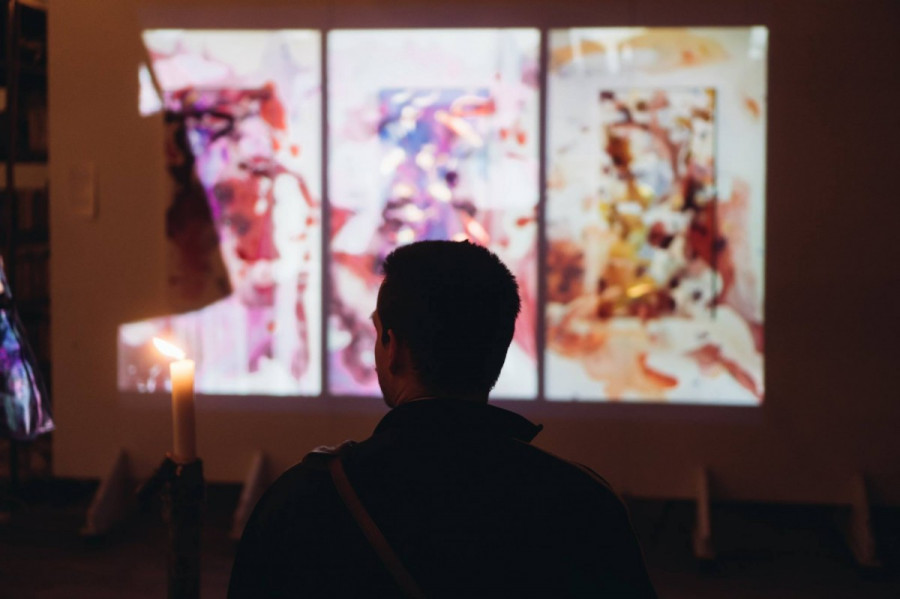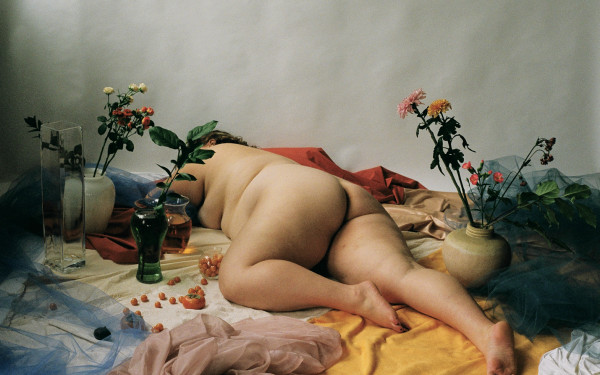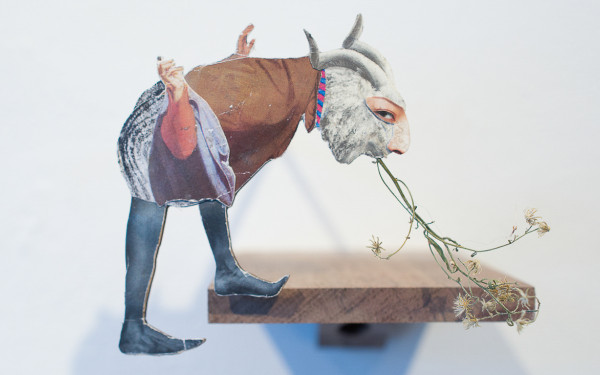Art Matters: ‘Interface’ Exhibit Enfolds a Digital Future
Vivid Haptics and Dynamic Crafts Featured at the Festival
Interfaces without cursors or icons—luscious, singing, yet static all the same.
This article has been updated.
Art Matters: Interface offers a handful of anthropocentric textile, haptic, and digital artworks. Located at Nomad Nation in the Mile-End, the exhibited art is situated amidst a menagerie of permanent installations and decorative objects.
Interface offers a profound take on haptics, the study of touch and technology concerned with sensation. Many works focus on interactivity, but your hands are not required to converse with them. The gallery is arranged to allow collections of audio-visual voices to direct your thoughts towards the silent conversations exuding from the machines, but also towards the economic and personal realities that lead to the shaping of technology.
As curator Serena Desaulniers commented in a brief interview, “it’s more thinking about touching.”
The exhibit “explores haptic interactions in both craft and digital media, intermedia-based works […] grounded in the development of software development and computers,” said Desaulniers.
Expanding upon various themes addressed in her research on haptics, Desaulniers aims to draw attention to “the consumption of the product.” It is a difficult phenomenon to contain, but the exhibit approximates it through your imagination.
One cybernetic installation entitled Tube Holler , created by Charline Lemieux, presents three cloth and wood tubules that groan and click amongst each other. The tubes are physically stationary, but their enigmatic discourse extends beyond their frames.
According to Lemieux’ curatorial blurb, the work emulates both the “laborious operation of weaving […] simplified into up-down or 0-1 commands […] [and the tubes’] future materiality.”
In its alien indifference, Tube Holler illustrates a discrepancy between the material and content of technical products and their destiny. It is one that expands beyond comprehension. Lemieux echoes this fact by framing a conversation between artificial minds, the tube hollers. It is linguistically inaccessible, but not physically.
Other coded structures hide behind projectors and beneath laptops, while their iceberg points blend into wooden panels and closet-like containers.
Charlotte Dora Rollert’s What Comes Natural is such a piece. Utilizing Python code and motion sensors, its components operate upon and in reaction to the movements of the viewers. A set of headphones provides a visceral sound piece wrought with humid respiratory textures to encompass the experience.
Accompanying the sound piece is a triptych of vivid panes and pulses, a set of painterly video projections that abstract “an infant’s first year of life as he learns to coordinate his body in space,” as Rollert’s text expresses.
Meanwhile, violet drones from Teodora Stefan’s Fragmentary Togetherness draw your attention to the margins of the gallery space, reaching out to disorient, but enchant you.
Stefan’s piece operates as a crystalline nostalgia, “touching on the power of collective memory and on how the fragments of the places we visited resonate with us in the present,” in the text found alongside the photographic print.
The exhibit presents a series of one-way lines of communication; artworks that do not converse with you, so much as provoke internal conversations.
As Desaulniers suggested, haptics concerns “objects you interact with on a daily basis and [that] you touch and move and experience […] physically rather than visually.” Much of the interaction occurs within you.
Desaulniers would like “people to take away alternate ways of experiencing art […] not just visually or not just a painting on a wall, but presented in a little bit of different way.”In the context of a space such as Nomad Nation, this is achieved more easily. Without white walls, “the whole space kind of challenges the way you consider art and what is presented to be art.”
Interface running at Nomad Nation until March 26 // 129 av. Van Horne // Tuesday-Friday, 14:00-19:00; Saturday 11:00-17:00 // Free admission
A previous version of this article misspelled Serena Desaulniers’ last name. The Link regrets the error.



_600_375_90_s_c1.jpg)


